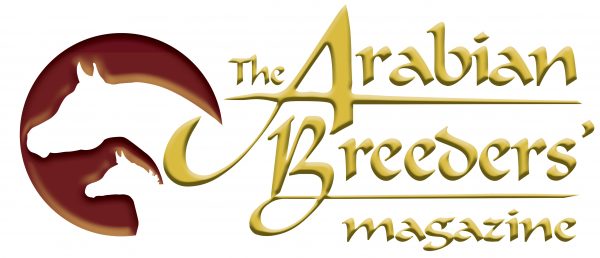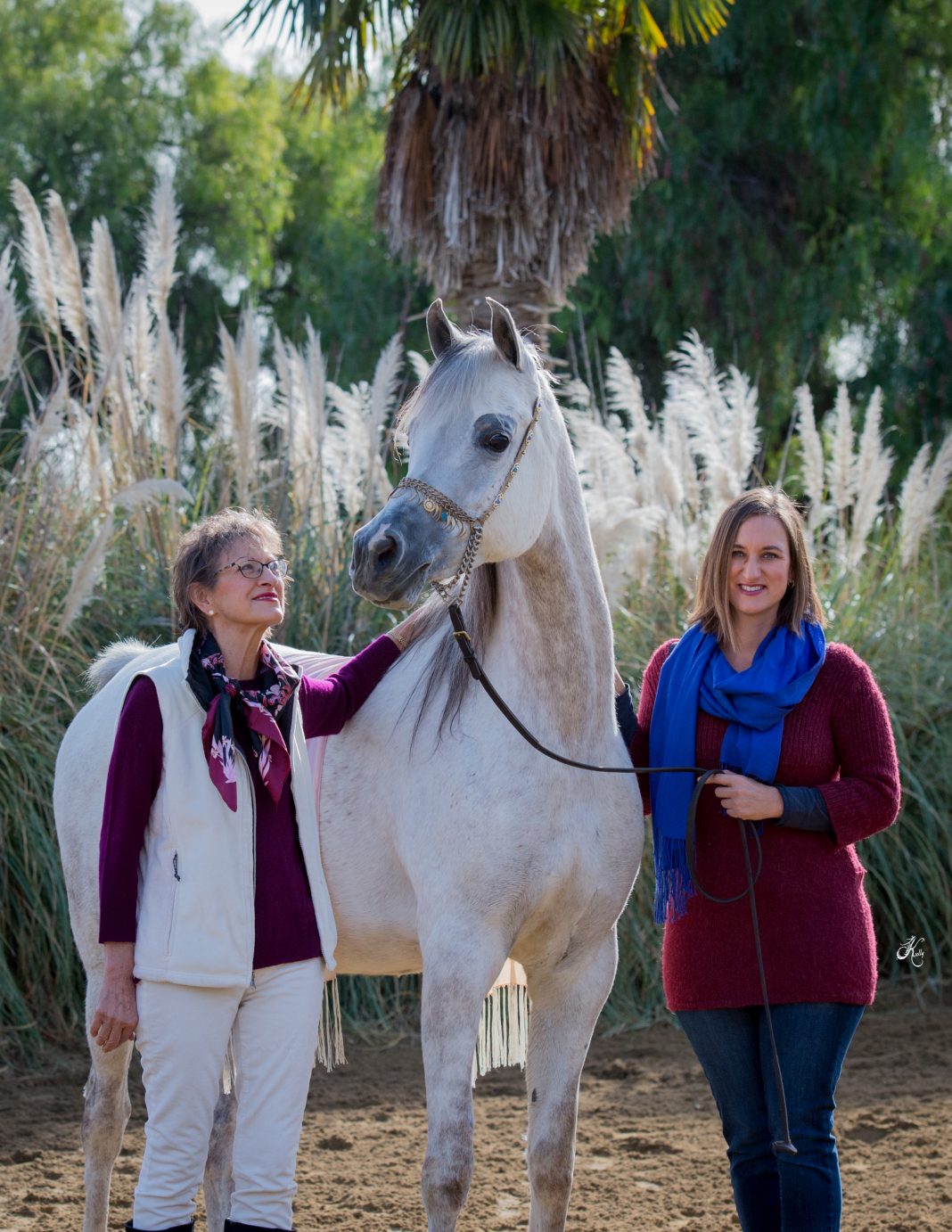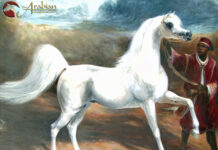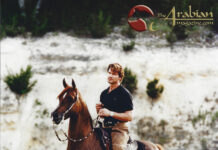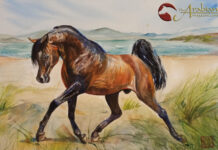First printed in The Arabian Breeders’ Magazine Volume I Issue I September 2016. Please enjoy this interview with Janina Merz.
In every edition of The Arabian Breeders’ Magazine, we speak to a selection of breeders from around the world about their experiences and successes with their breeding programme. We are delighted to share some of these incredibly insightful features online.
The Arabian Breeders’ Magazine (TABM): Please share with our readers a short background to your farm.
Janina: My parents, Sigi Siller and Heinz Merz, started Om El Arab in Bavaria, Germany in 1970. They were young students, lucky enough to buy the great mare Estopa (Tabal x Uyaima by Barquillo) in Spain, along with eighteen other beauties. They also travelled to Egypt and acquired the beautiful straight Egyptian stallion, Shaker El Masri (Morafic x Zebeda by El Sareei) and several other horses. The mating of Shaker El Masri to Estopa would change the course of Arabian horse history by creating the ‘Golden Cross’ and the stallion, El Shaklan, born in 1975. In 1984, the farm moved from Germany to Santa Ynez, California, and that is where Om El Arab remains to this day.

Om El Al Azeem (Al Lahab x Om El Beneera). Credit April Visel.
TABM: What have been the bloodlines that you have focused on, and why did you choose them? Has this focus changed over the years?
Janina: We have focused on Spanish/Egyptian bloodlines from the beginning. The style of horse that was created from this Golden Cross was both functional and beautiful. My mother, especially, has always bred horses that appealed to her and whether they fitted the current trend or not, she stayed true to her ideals. We have been fortunate that her type of horse also appeals to many people around the world!
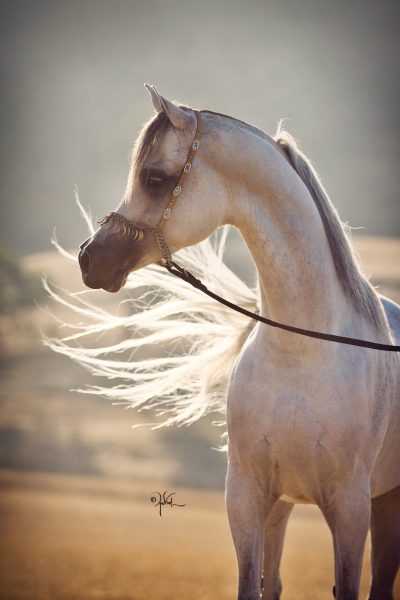
Om El Bellissimo (Om El Shahmaan x Om El Benedict). Credit April Visel.
TABM: What were your breeding goals when you first started? Have they changed over the years?
Janina: The breeding goals have not changed drastically through the years. We still breed horses that unmistakably ooze ‘Om El Arab’. In recent years high quality show horses have gotten prettier and prettier so we definitely try to keep improving each generation to keep up with the times. We have done this through considered outcrosses, such as Al Lahab, who brought in some fresh blood to our programme, while remaining true to our Spanish/Egyptian lines.
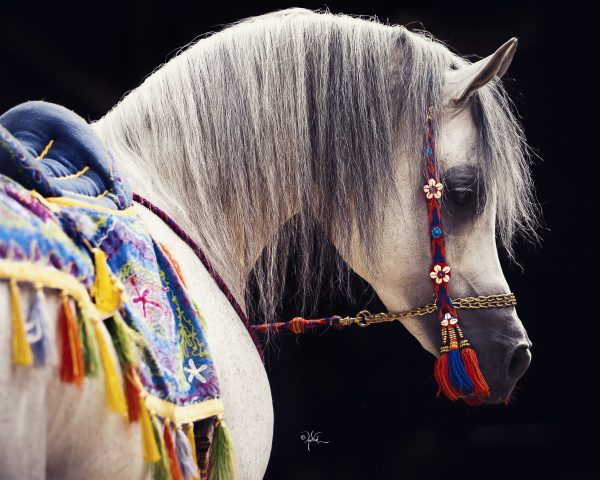
Om El Shahmaan (Sanadik El Shaklan x Om El Shaina). Credit April Visel.
TABM: Please share key moments that stand out in the early stages of your breeding programme?
Janina: In the 1970s and 1980s, Om El Arab dominated the European show-ring. I believe it was a total of 14 World Champions and Reserve World Champions were crowned during that time from Om El Arab bloodlines. It was an exciting time – and something very different from today’s world.
TABM: When was it that you realised that you were a successful breeder? And what, in your opinion, defines a ‘breeder’?
Janina: I think my parents realised that they were successful pretty early on. A breeder, to me, is someone with a vision of the type of horse that they want to create, and they then breed individuals close to their ideal for several generations.
TABM: As a breeder, how do you feel about the showing world? Do you think that changes are needed to celebrate breeders more?
Janina: That is a loaded question. I think the show world is important. Without it, we wouldn’t have a market for very high-end horses. I also think that the show world pushes people to breed better and better horses.
Having said that, it also creates a rift between the people that can afford to show at the highest level and the people that cannot. There is a lot of effort being made around the world to create shows with a more level playing field. I think we need to continue to be innovative and creative so that we don’t alienate, and thus lose, a huge group of Arabian breeders.
TABM: Do you think that breeders are a dying breed, pardon the pun?
Janina: When we look at how many breeding farms there were 20-30 years ago compared to today, we do need to admit that there is a problem. However, there are several relatively new and very successful breeders emerging from the Middle East. I am not sure if this is a permanent shift of demographic, but I guess time will tell. In the US, for sure, and I believe in Europe as well, we have seen our market for breeding horses that are not ‘World Champions’ decline. I think that the disposable income of middle class people is not where it was ten years ago, and that has created a problem.
There is also another issue that is close to my heart, and that is the devaluation of colts in the past few years. I think it is a dangerous venture when half of the foals born in a year are immediately devalued for the sake of being colts. We need to bring their value up again for several reasons, but primarily because we need them for our gene pool. We cannot continue to breed to the same five stallions in the world and think that there won’t be a problem in the future. We have a decent market for our young colts and each time we sell one to a breeder, it makes me so happy that the colt will have a future. Our horses are often not mainstream bloodlines, so I also feel like we’re contributing to the expansion of the gene pool when these young stallions get used.

Sigi Siller with Estopa (Tabal x Uyamia). Credit Gabriella Boiselle.
TABM: Do you think that breeders and dedicated breeding programmes still have a place in the world today?
Janina: Breeding programmes are essential for the future of our breed. We need to preserve the genetic reliability of horses that were bred within a breeding programme so that we have horses to breed with in the future. If breeding programmes die out completely, it will be difficult for future breeders to make reliable breeding choices.
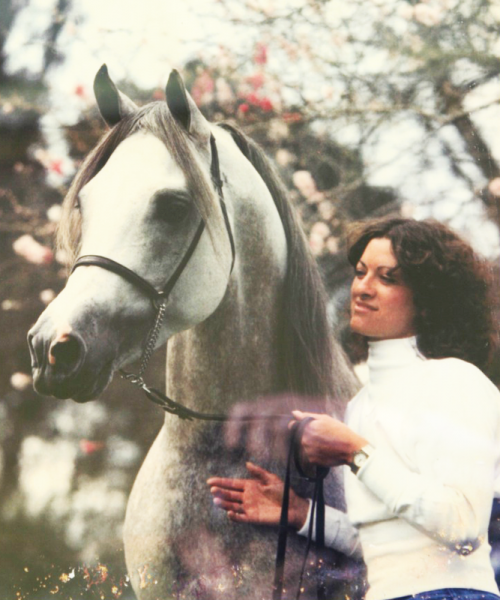
Sigi with El Shaklan (Shaker El Masri x Estopa). Credit Om El Arab archives.
TABM: Over the years, what have been your key successes, perhaps the ones that define your farm?
Janina: My mother always bred the kind of horse she loved to look at and also loved to ride. She never wavered when trends went one way or another, and I believe that this was the secret to her success, and also how she created a type of horse with a look that is unmistakably ‘Om El Arab’
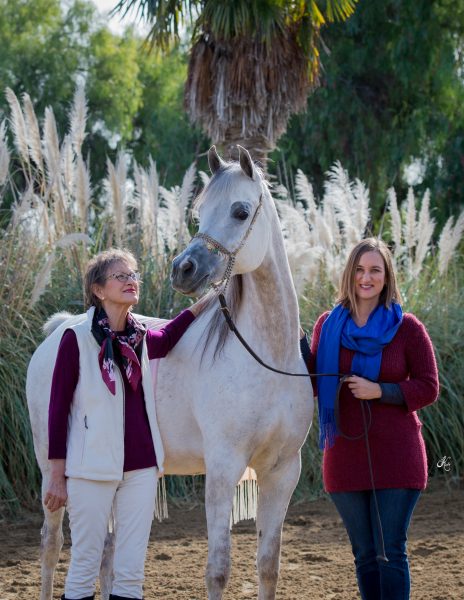
Sigi and Janina with Om El Aliha (Om El Al Azeem x Om El Shaina). Credit Kelly Campbell.
TABM: And finally, what is next for you and your breeding programme?
Janina: It has been a big year for me. Losing my mum in May has been very challenging. I have had to learn to trust my instincts and just keep putting one foot in front of the other as I learn to navigate life without her. One thing is for certain, I am incredibly grateful for the 40 years I had with her, and I am blessed to be able to continue her life’s work and passion.
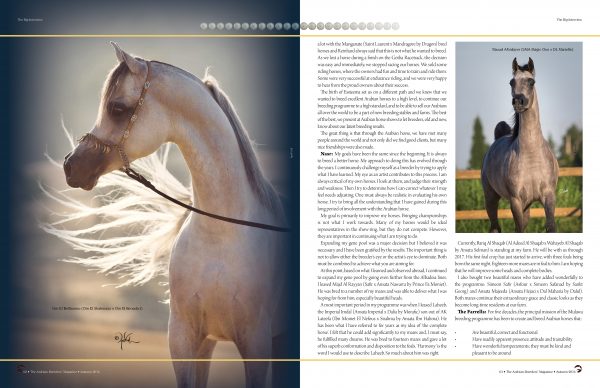
First printed in The Arabian Breeders’ Magazine Volume I Issue I September 2016. To enjoy further content such as this, please visit The Arabian Magazine Shop.
